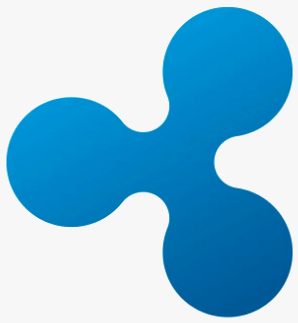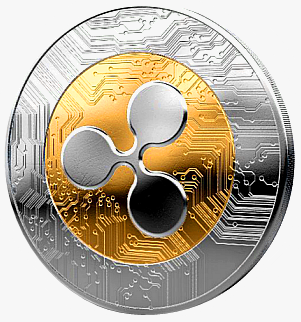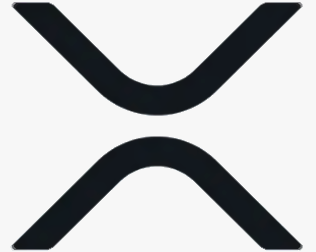Accredited InvestorsAltcoinAnatoli UnitskyAnti-Money Laundering (AML) In CryptoAPIArbitrageArtCoin TokenArticle DirectoryASICAuction Terminology GlossaryBasics of Stock Market InvestingBear MarketBest Crypto Payment Provider In the WorldBitcoinBlockchainBlockchain ConfirmationBlockchain Consensus MechanismBlockchain ForkBlockchain GlossaryBored Ape Yacht ClubBuild a Business That OutperformsBull MarketBuying SkyWay SharesByzantine Fault Tolerance (BFT) ExplainedCasascius CoinCentral Bank Digital Currency (CBDC)Centralized Crypto ExchangeCoinCoinsetCold WalletCollateralCommodity Futures Trading Commission (CFTC)Cross-Chain TechnologyCRUCrypto ExchangeCrypto GlossaryCrypto JokesCrypto Terms to KnowCrypto TickerCryptocurrencyCryptographyCryptojackingCryptounit BlockchainCryptounit GlossaryCryptounit ProgramdApp (Decentralized Application)Dead CoinDecentralized Exchange (DEX)Decentralized Finance (DeFi)Difference Between Bitcoin and EthereumDifferent Ways of Investing MoneyDigital CurrencyDistributed LedgerDo Your Own Research (DYOR)Dollar Cost Averaging (DCA)Dow Jones Industrial Average (DJIA)EncryptionERC-20ERC-721EthereumEvoScentFear Of Missing Out (FOMO)Fear, Uncertainty and Doubt (FUD)Fiat MoneyFNT Fintech CompanyGenesis BlockGlobal Unit PayGlossary of Banking TermsGlossary of Business TermsGlossary of Financial TermsHalvingHODLHot WalletHow Do I Start InvestingHow Rich is Satoshi Nakamoto?How to Create a BlockchainHow to Find Private InvestorsHow to Get Into FintechHow to Program Smart ContractsI Am Thrilled to Be a Part of This Global ProjectInitial Coin Offering (ICO)Initial Public Offering (IPO)Initial Token Offering (ITO)Innovation Basalt TechnologyInnovative Transportation TechnologiesInternational Bank Account Number (IBAN)Investing in Gold Mining StocksInvesting in Gold MiningJagerJoy of Missing Out (JOMO)Know Your Customer (KYC)LedgerLiquidity in CryptocurrencyMaker and Taker Fees in Crypto TradingMarket Capitalization (Market Cap)Meme CoinMetal Credit CardMetaMaskMillenials Now Have Access to Generational WealthMy Best Investment EverNew Digital EvolutionNFT GlossaryOff-Chain TransactionsOn-Chain TransactionsOpen Edition NFTPeer-to-Peer (P2P)Personal Loan GlossaryProbably the Best STO on the MarketProof of Stake (PoS)Real Estate Glossary of TermsReal Estate Investing GlossaryRebase TokenSecurities and Exchange Commission (SEC)Security Token ExchangesSecurity Token Offering (STO)Soulbound Decentralized Identities for Security TokensSoulbound ID Launch by Stobox Proves a SuccessSoulbound TokensStoboxStock Market GlossaryTestimonialsTether Platform and Token (USDT)UnitEx ExchangeUnitsky String TechnologiesUNTBUSDUValidatorWe Started Investing When We Were 25What are Blue Chip NFT?What are Blue Chip Stocks?What are Crypto Assets?What are Crypto Smart Contracts?What are CryptoPunks NFT?What are Digital Assets?What are Digital Collectibles?What are Gas Fees?What are Gas Wars?What are Hashmasks?What are Non Fungible Tokens?What are Non-Sufficient Funds (NSF)?What are Soulbound Tokens (SBT)?What are Stablecoins in Crypto?What are Transactions Per Second (TPS)?What are Utility NFTs?What are Utility Tokens?What Does Burning Crypto Mean?What Does Diamond Hands Mean?What Does Paper Hands Mean?What Does To The Moon Mean?What Does WAGMI Mean?What Happened to Satoshi Nakamoto?What is a 51% Attack?What is a Baby Boomer?What is a Backlink?What is a Banner?What is a Barcode?What is a Bid-Ask Spread in Crypto?What is a Block in Blockchain?What is a Block Reward?What is a Blockchain Address?What is a Blockchain Node?What is a Blockchain Oracle?What is a Blog?What is a Bond?What is a Bot?What is a Broker?What is a Business Accelerator?What is a Cash Cow?What is a Commercial Bank?What is a Commodity?What is a Con?What is a Credit?What is a Credit Limit?What is a Credit Rating?What is a Crypto Airdrop?What is a Crypto Bridge?What is a Crypto Scam?What is a Crypto Token?What is a Crypto Wallet?What is a Crypto Whale?What is a Crypto Winter?What is a Cryptocurrency Public Ledger?What is a Cryptocurrency Roadmap?What is a DAO?What is a Dark Pool?What is a Day Trader?What is a Dead Cat Bounce?What is a Default?What is a Derivative?What is a Digital Credit Card?What is a Fiscal Quarter?What is a Fungible Token?What is a Governance Token?What is a Grace Period?What is a Hard Fork?What is a Hot Wallet?What is a Hybrid Blockchain?What is a Hybrid PoW/PoS?What is a Joint Account?What is a Market Cap?What is a Merkle Tree in Blockchain?What is a Mining Farm?What is a Nonce? What is a PFP NFT?What is a POS System?What is a Prepaid Card?What is a Private Blockchain?What is a Private Key?What is a Public Blockchain?What is a Public Key?What is a Reserve Currency?What is a Ring Signature?What is a Routing Number?What is a Rug Pull in Crypto?What is a Safe Deposit Box?What is a Satoshi?What is a Security Token?What is a Seed Phrase?What is a Shitcoin?What is a Sidechain?What is a Soft Fork?What is a Spot Market?What is a State Bank?What is a SWIFT Code?What is a Tax Identification Number (TIN)?What is a Time Deposit?What is a Transaction Account?What is a Variable Interest Rate?What is a Virtual Assistant (VA)?What is a Virtual Card?What is a Virtual Currency?What is a Visa Card?What is a Whitelist in Crypto?What is a Whitepaper?What is Accounts Payable (AP)?What is AMA in Crypto?What is Amortization?What is an Accrual?What is an ACH Transfer?What is an Actuary?What is an Addendum?What is an Algorithm?What is an Angel Investor?What is an Annuity?What is an Asset?What is an ATM?What is an Atomic Swap?What is an Audit?What is an Avatar?What is an EIN?What is an Embargo?What is an Entrepreneur?What is an IDO (Initial Dex Offering)?What is an Interest Rate?What is an Internet cookie?What is an Investment Bank?What is an NFT Drop?What is an NFT Floor Price?What is an Ommer Block?What is an Orphan Block?What is an Outstanding Check?What is an Overdraft?What is Artificial Intelligence (AI)?What is B2B (Business-to-Business)?What is B2G (Business-to-Government)?What is Bartering?What is Bitcoin Dominance?What is Bitcoin Pizza Day?What is Blockchain Immutability?What is Blockchain Used For?What is BRICS?What is Business-to-Consumer (B2C)?What is C2C (Customer to Customer)?What is Capitalism?What is Catfishing?What is CFD Trading?What is Check Kiting?What is Cloud Mining?What is Communism?What is Content Marketing?What is Decentralization in Blockchain?What is DeFi in Crypto?What is Delisting?What is Depreciation?What is Digital Marketing?What is Diversification?What is Double Spending?What is Dumb Money?What is Dumping?What is Earnings Per Share (EPS)?What is Economics?What is Email Marketing?What is Equity?What is Etherscan?What is Fintech?What is Foreign currency?What is Forex?What is Fundamental Analysis (FA)?What is GameFi?What is Generative Art NFT?What is Gwei?What is Hard Currency?What is Hash Rate?What is Hashing in Blockchain?What is Inflation?What is Initial Game Offering (IGO)?What is Interest?What is Interest Income?What is Mainnet?What is Mastercard?What is Metaverse in Crypto?What is Mining in Cryptocurrency?What is Minting NFT?What is Mobile Banking?What is Money Laundering?What is NFT Alpha?What is NFT Metadata?What is NFT Rarity?What is NGMI Meaning?What is Nominal Interest Rate?What is Online Banking?What is Open-End Credit?What is OpenSea NFT Marketplace?What is Personal Identification Number (PIN)?What is Play-to-Earn?What is Polygon?What is Proof of Authority (PoA)?What is Proof of Work (PoW)?What is Public Key Cryptography?What is Pump and Dump?What is Quantum Computing?What is Refinancing?What is Retail Banking?What is Ripple?What is Sharding?What is Slippage in Crypto?What is Smart Money?What is Solvency?What is Soulbound ID?What is SSL?What is Staking in Cryptocurrency?What is Technical Analysis (TA)?What is Testnet?What is the Ask Price?What is the Better Business Bureau (BBB)?What is the Bid Price?What is the Dark Web?What is the InterPlanetary File System (IPFS)?What is the Gold Standard?What is the Lightning Network?What is the Prime Rate?What is the Sandbox?What is the Secondary Market?What is the World Bank?What is Tier 1 Capital?What is Tokenomics?What is TRC-20?What is Universal Banking?What is Unspent Transaction Output (UTXO)?What is Usury?What is Volatility in Crypto?What is Wash Trading?What is Web3?What is Whisper?What is XRP?What is Zero-Knowledge Proof (ZKP)?Who is Beeple?Who is Satoshi Nakamoto?Who is Vitalik Buterin?Why Tokenization is a Safe HavenWhy You Should Try Your Hand at Trading
What is Ripple?
- Home
- Crypto Glossary
- What is Ripple?
A frequent misunderstanding is that Ripple is a cryptocurrency, but in fact, Ripple is not a cryptocurrency. Instead, Ripple has its own cryptocurrency called XRP.

What is Ripple?
Ripple is a digital payment protocol that facilitates fast and secure cross-border transactions. It is an open-source platform that was created in 2012 by a company called Ripple Labs, which is now known as Ripple.
Ripple's main goal is to make it easier for financial institutions to transfer money across borders quickly and at a low cost. The Ripple protocol is based on a decentralized network of servers that validate and process transactions. This network is known as the XRP Ledger.
The XRP Ledger uses a digital asset called XRP as a bridge currency to facilitate cross-border transactions. This means that when a financial institution wants to transfer money from one country to another, it first converts the money into XRP and then sends it to the recipient institution, who then converts the XRP back into their local currency. This process reduces the time and cost of traditional cross-border transactions.
Ripple also has a product called xRapid, which uses XRP as a liquidity solution for payment providers and financial institutions. It allows them to settle cross-border payments in real-time, without the need for pre-funded nostro accounts.
Ripple's technology has been adopted by several large financial institutions such as Santander, American Express, and Standard Chartered. Ripple has also been working to expand its use case beyond cross-border payments by developing solutions for remittances, micropayments, and e-commerce.
History
Ripple, the cryptocurrency and blockchain project, was first created by software developer Ryan Fugger as RipplePay in 2004. The platform allowed people to extend credit to others in their community and predates Bitcoin, making it a rare crypto project that existed before the advent of Bitcoin.
Even Bitcoin's anonymous creator, Satoshi Nakamoto, mentioned Ripple once in an email. In 2011, programmer Jed McCaleb began developing the XRP cryptocurrency and blockchain, and in 2012, he approached Fugger about using the RipplePay network. Fugger agreed to hand over control of RipplePay and McCaleb's team launched the XRP cryptocurrency and the company, originally called NewCoin, which later changed to OpenCoin, and finally to Ripple.
Ripple has since established partnerships with various financial institutions, and in 2019, announced that over 300 financial institutions in more than 45 countries were using its RippleNet payment network. This success can be seen as a point in favor of the cryptocurrency as a potential investment.
Understanding Ripple
Ripple is built on a decentralized, open-source, and peer-to-peer platform that enables the smooth transfer of various forms of currency, including dollars, yen, euros, and cryptocurrencies such as litecoin or bitcoin. It is a worldwide payments network and has several major banks and financial services companies as its clients. XRP is utilized in Ripple's products to make the conversion of different currencies faster.

How Ripple Works
Unlike bitcoin which uses proof-of-work (PoW) or NXT (an open source cryptocurrency and payment network launched in 2013 by anonymous software developer BCNext) which uses proof-of-stake (PoS), the Ripple network utilizes a consensus protocol to validate account balances and transactions. This protocol enables the network to maintain the integrity of the system and prevent double-spending.
Compared to bitcoin, Ripple transactions consume less energy, are quickly confirmed and have low transaction fees, while bitcoin transactions are energy-intensive, take longer to confirm and have higher fees.
When a user initiates multiple transactions to different gateway systems on the Ripple network, all but the first transaction will be rejected. The consensus among the individual distributed nodes determine which transaction was made first. The confirmation process takes around 4-5 seconds. The absence of a central authority that controls the establishment of nodes and the confirmation of transactions makes the Ripple platform decentralized.
Ripple Advantages
Ripple offers several advantages over other forms of digital currency and traditional banking methods:
- Rapid settlement times, with transactions typically being confirmed within 4-5 seconds.
- Extremely low transaction fees, at just 0.00001 XRP per transaction.
- A versatile network that supports not just XRP but also fiat currencies and other cryptocurrencies.
- Wide adoption by large financial institutions, such as Santander and Bank of America.
Ripple Disadvantages
Ripple has some disadvantages that should be considered:
- It is somewhat centralized, as it uses a default list of validators that goes against the decentralized philosophy of cryptocurrencies.
- It has a large pre-mined XRP supply, which could impact the value of XRP if large quantities are introduced at inopportune times.
- In December 2020, the Securities and Exchange Commission (SEC) filed a lawsuit against Ripple, alleging that XRP should have been registered as a security since the company can decide when to release it. Ripple has denied the allegation.
Related Articles

What is XRP?
XRP is a digital asset that serves as a native currency on the RippleNet network. RippleNet is a decentralized global network of banks, payment providers, and digital asset exchanges that enables...

What is Proof of Work (PoW)?
Proof of work (PoW) refers to a system that demands a considerable amount of effort to discourage malicious uses of computing power, such as sending spam emails or launching denial of service attacks.

Proof of Stake (PoS)
Since cryptocurrencies are not under a centralized authority to track transactions and balances, their underlying systems require a method for users to agree on who owns what.
- Home
- Crypto Glossary
- What is Ripple?